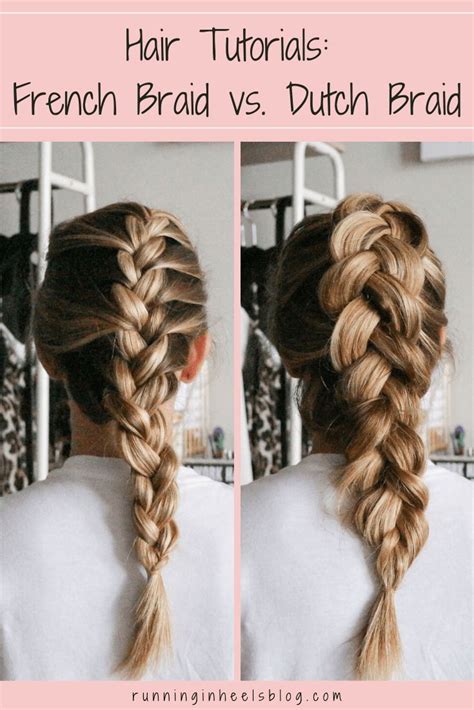Introduction
Braids are a versatile and timeless hairstyle that can transform any look. While many people are familiar with French braids, there is another equally alluring option: Dutch braids. These two braiding techniques share similarities but also possess distinct features that set them apart. This comprehensive guide will explore the 10 key differences between Dutch braids and French braids, empowering you to choose the perfect braid for your style and occasion.

Key Differences
1. Braiding Technique
- French Braids: Sections of hair are crossed over and under each other, creating a raised effect.
- Dutch Braids: Sections of hair are crossed under and over each other, resulting in an inverted, or “inside-out,” appearance.
2. Visual Effect
- French Braids: Appear more elegant and intricate, with a delicate lace-like pattern.
- Dutch Braids: Create a bolder, more voluminous look with a defined and raised texture.
3. Complexity
- French Braids: Can be more challenging to master, especially for beginners.
- Dutch Braids: Generally easier to learn and execute, making them suitable for all skill levels.
4. Pain Level
- French Braids: Tend to be more painful, as the hair is pulled tightly against the scalp.
- Dutch Braids: Cause less discomfort, as the hair is tucked under, creating a more relaxed tension.
5. Hold
- French Braids: Typically last longer and are less prone to unraveling due to the tight braiding technique.
- Dutch Braids: May loosen slightly over time, as the inverted braiding allows for more movement and flexibility.
6. Hair Volume
- French Braids: Create a more subtle increase in hair volume.
- Dutch Braids: Add significant volume to the hair, making them an ideal choice for those seeking a fuller braid.
7. Versatility
- French Braids: Can be incorporated into various hairstyles, from buns to updos.
- Dutch Braids: Are more suited to styles that showcase their volume, such as single braids or ponytails.
8. Face Shape
- French Braids: Frame the face beautifully, creating a flattering effect for most face shapes.
- Dutch Braids: Can emphasize the cheekbones and jawline, making them a good option for round or square face shapes.
9. Occasion
- French Braids: Ideal for formal events, weddings, or special occasions where elegance is desired.
- Dutch Braids: Perfect for casual outings, sports activities, or bohemian-inspired looks.
10. Popularity
- French Braids: Have a long-standing tradition and remain a classic hair braiding technique.
- Dutch Braids: Are gaining popularity in recent years, especially among younger generations.
Which Braid is Right for You?
Ultimately, the best choice between Dutch braids and French braids depends on your personal preferences, hair type, and the desired look. Here’s a concise guide to help you make the decision:
-
Choose French Braids for:
- Elegant, intricate hairstyles
- Longer-lasting hold
- Flattering effect on most face shapes
-
Choose Dutch Braids for:
- Voluminous, eye-catching hairstyles
- Less pain and discomfort
- Accentuating cheekbones and jawline
- Casual and bohemian looks
Conclusion
Dutch braids and French braids offer distinct and captivating options for hairstyling. Understanding their key differences allows you to make an informed decision based on your individual style and needs. Whether you seek an elegant French braid or a bold Dutch braid, mastering these braiding techniques will elevate your hair game to new heights. Embrace the art of braiding and let your hairstyles shine!
FAQs
1. Which braid is more painful?
French braids are generally considered more painful than Dutch braids.
2. Which braid lasts longer?
French braids typically last longer due to their tighter braiding technique.
3. Can Dutch braids be worn on short hair?
Yes, Dutch braids can be worn on short hair, but they may be smaller and less voluminous.
4. What is the best way to learn how to braid?
Practice makes perfect! Start with simple braids and gradually work your way up to more complex techniques.
5. Are Dutch braids or French braids better for formal occasions?
French braids are traditionally seen as more elegant and appropriate for formal events.
6. How can I make my braids look thicker?
Use hairspray or mousse to create volume and fullness before braiding.
7. What are some creative ways to style braids?
Incorporate hair accessories, wrap braids around hair elastics, or experiment with different sizes and shapes.
8. How do I keep my braids from frizzing?
Apply a serum or hairspray to tame flyaways and prevent frizz.
